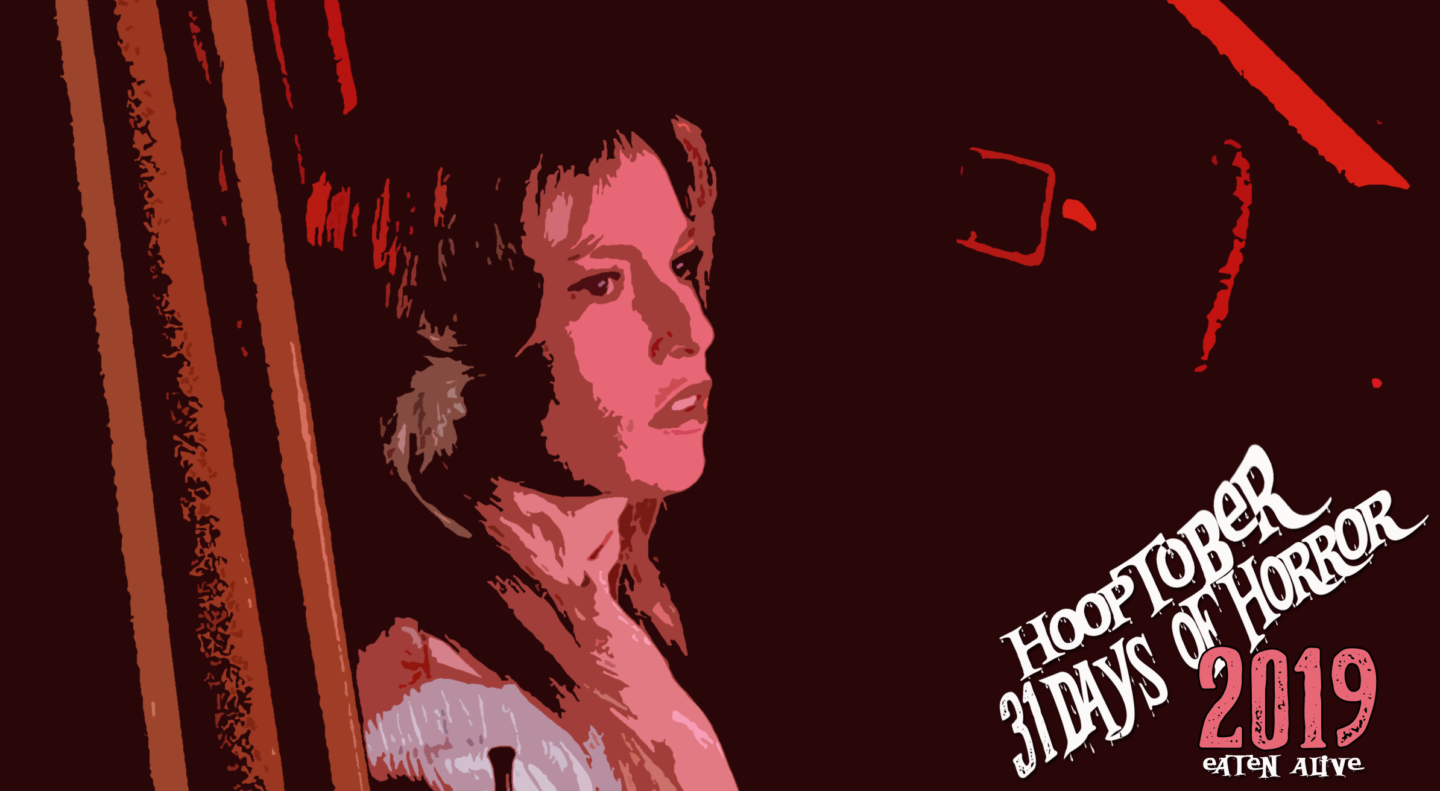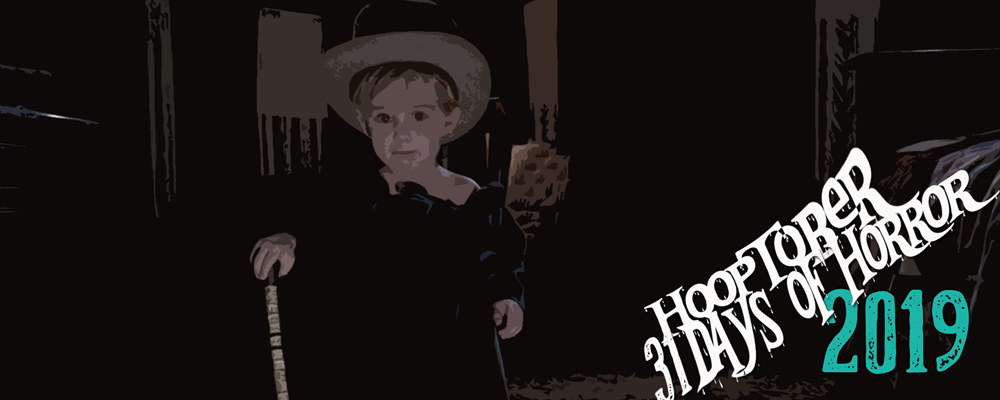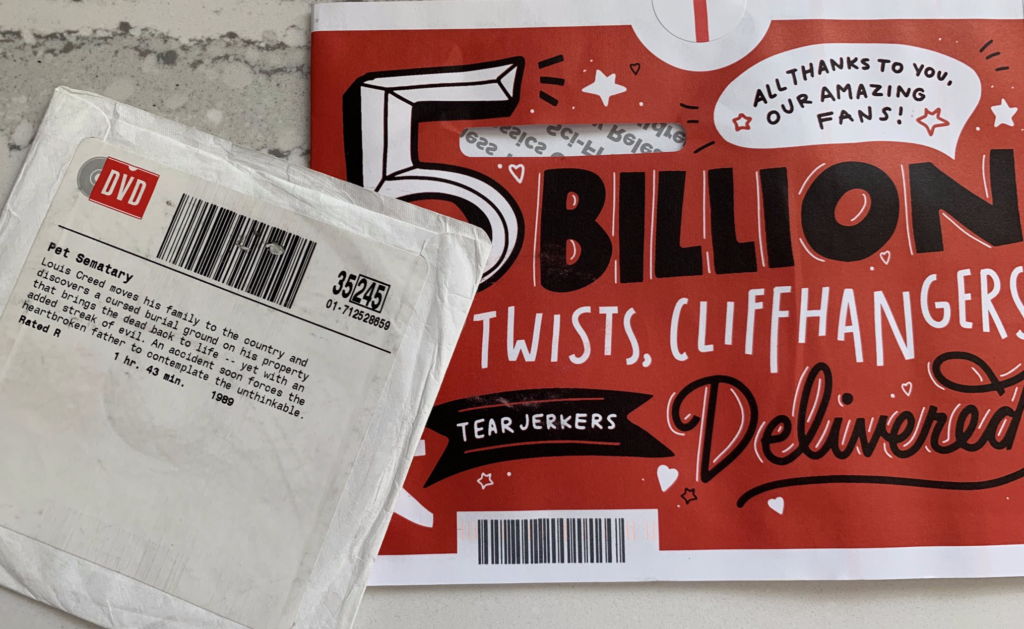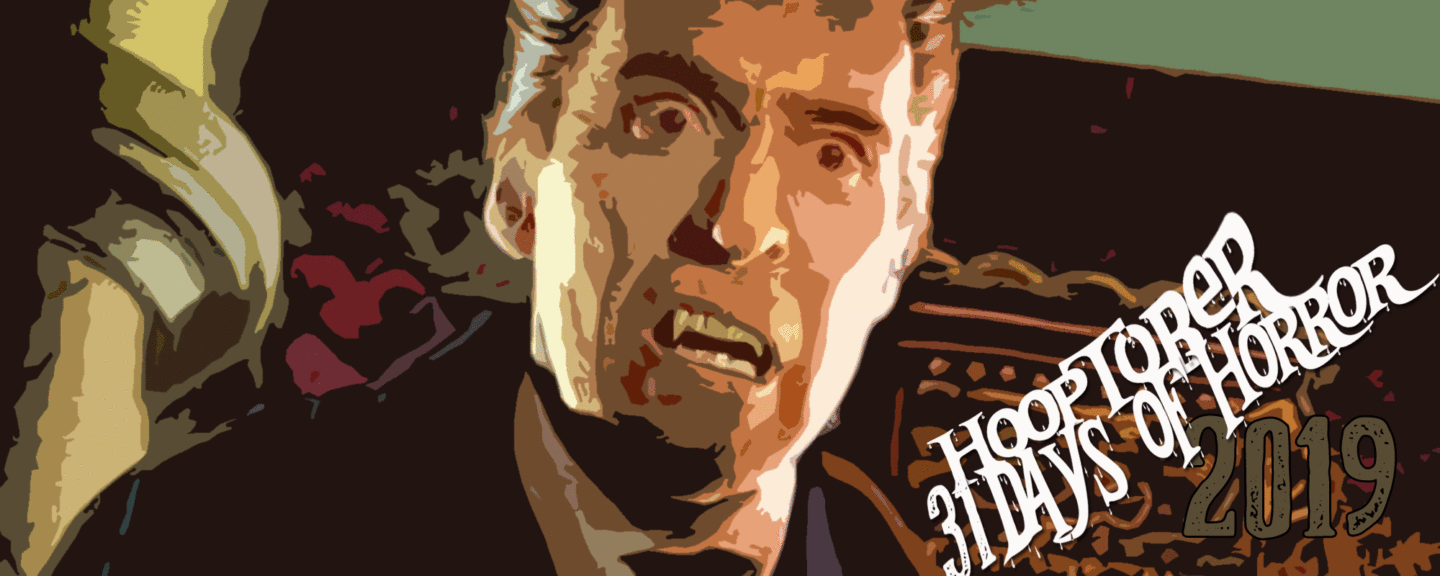#13. Eaten Alive (1976)
 Nature of Shame:
Nature of Shame:
Unseen Tobe Hooper
Hooptober Challenge Checklist:
Decade: 1970’s
There Must Always be a Tobe Hooper
Reptile rampage (tribute to Crawl)
Just rounding out my Tobe Hooper filmography with one I haven’t seen because, per Cinemonster’s rules, there must always be a Tobe Hooper. I knew nothing about this one except it featured an alligator or a crocodile or some such beast and it also, fortuitously, satisfied the “reptile rampage” requirement.
‘Eaten Alive’ Elevator Pitch
There’s this motel located deep in the south of Texas where guests check in, but they don’t always check out because some of them get fed to the gator by a wild-eyed Jack Elam-looking coot played by Neville Brand.
And the protagonist of your story?
The gator, obviously.
The man-eating alligator that lives off the porch is going to be your hero of the picture? You’re pulling my leg.
Not a bit. The girl you think is the main girl gets eaten. And then the next one gets eaten, too — also the dog — and so on and so forth until the sister of the one that gets eaten shows up and she becomes the focus of the story.
And the alligator?
You’ll just have to see, won’t ye?
Hold on. Did you say the dog gets eaten?

No One Suspects the Starlight Motel
And I have to ask why. It looks like people have been murdered there, with regularity. Anyone stopping by thinking they’re in for a good night’s rest must have a seriously problematic home life. When the naive prostitute Clara gets evicted from her brothel for refusing Robert Englund “butt-stuff” she turns to the Starlight Motel for accommodations. I questioned her judgment.
She’s met immediately by the proprietor, the grizzled Judd, more cured meat with a woman’s wig than man, who attempts some sort of kooky blend of murder and #MeToo crime before hacking her to pieces with a scythe before — you guessed it — making her gator meat.

Put Eaten Alive’s so-called narrative on the back burner for just a second so we can take a look at how Tobe Hooper presented this wild (inept?) premise for public consumption. Eaten Alive has no definitive structure. Hooper’s cobbled together a series of murders by placing a madmen and his pet alligator at the center of a Southern Gothic nightmare. Whereas something like Texas Chainsaw Massacre felt rooted in a nightmare version of reality, Eaten Alive feels more like straight nightmare.
Low budget single-location set design shrouded in fog. Caustic, unnatural lighting techniques. Stilted dialogue and unnatural pauses. Dutch angles and numerous POV shots. While Tobe Hooper’s fingerprints remain all over the blood and morbidity, you wouldn’t be faulted for thinking that maybe David Lynch had a hand in this production as well.

Surrealistic, Twilight World
Contemporaneous critics couldn’t help but compare this film to Texas Chainsaw Massacre and more often than not faulted Eaten Alive‘s hyperreality as the reason why it failed to live up to Hooper’s past precedent. I won’t go as far as to suggest that Eaten Alive is some overlooked classic because it’s too sloppy and shapeless to be a masterpiece, but it is indeed a special viewing experience and not the supposedly “inept” and worthlessly trashy horror flick. Scratch that last bit — it is definitely trashy.
Filmed entirely around an indoor pool on a sound stage at Raleigh Studios in Hollywood, California, Hooper achieved his goal of creating a “surrealistic, twilight world” through the apparent artifice of the set-bound production. The story had been adapted by Texas Chainsaw Massacre co-scribe Kim Henkel and based loosely on the story of Joe Ball (known as the Bluebeard from South Texas or the Alligator Man). Ball owned a bar with a live alligator attraction during the 1930s and also murdered several women. Though rumors persisted that he disposed of their corpses by feeding them to the alligator, it was never proven.
Hooper perfectly captures the isolated eccentricities of a grisly and desperate carnival of weirdos parading through the Texas swampland. Eaten Alive provides a grotesque and singular hallucinatory grindhouse experience. To watch Eaten Alive is to bathe in a mosquito-infested pool of the trashy macabre. It’s leering and sticky and no amount of showering can wash it away.

Final ‘Eaten Alive’ Thoughts
But I do not believe, however, that Eaten Alive displayed narrative ineptitude. Narrative indifference, on the other hand, sounds far more likely. Hooper doesn’t even attempt to create a traditional cinematic story. In order for a narrative to be inept, one must exist. In many ways, Eaten Alive reflects cinematic horror influenced by the giallo through garish colors and a foregrounding of a distinct visual style over substance. The violent vignettes become substance in lieu of traditional narrative.
Since the film’s backloaded resolution comes together during the final fifteen minutes it’s fair to suggest the film would have been better served without it. I wouldn’t call it unnecessary, but the film crawls to a halt when it most closely resembles narrative.
Trashy, gruesome and hyper-stylized, Eaten Alive provides an unforgettable experience for gorehounds and fans of David Lynch’s otherworldly, artificial milieu. Tobe Hooper’s production challenges the viewer to submit to his scattered whims. I can see why some would be turned off by the bizarre construction and lack of character development but why struggle? Sit back, get sweaty and enjoy the feast. Eaten Alive‘s a mile short of being called a masterpiece, but at times I couldn’t keep the word from popping into my head.

Eaten Alive is available via and Arrow Films Blu-ray.
2019 @CinemaShame / #Hooptober Progress
#1. Shocker (1989) // #2. Etoile (1989) // #3. The Phantom of the Opera (1989) // #4. Blacula (1972) // #5. Scream Blacula Scream (1973) // #6. Jaws: The Revenge (1987) // #7. Blood Bath (1966) // #8. Friday the 13th Part V (1985) // #9. Friday the 13th Part VI (1986) // #10. Friday the 13th Part VII (1988) // #11. Dracula: Prince of Darkness (1966) // #12. Pet Sematary (1989) // #13. Eaten Alive
James David Patrick is a writer. He’s written just about everything at some point or another. Add whatever this is to that list. Follow his blog at www.thirtyhertzrumble.com and find him on Twitter, Instagram, and Facebook.
Disclaimer: I earn rewards from DVD.Netflix.com, which has thousands of movies to choose from, many that you won’t find on streaming services. I do this because the availability of physical media is important. The popular streaming notion of “everything available all the time” is a myth. We are always our own best curators. #PhysicalMedia #DVDNation #ad



 Nature of Shame:
Nature of Shame:







 Nature of Shame:
Nature of Shame:



 Dracula: Prince of Darkness is currently available on a Scream! Factory Blu-ray
Dracula: Prince of Darkness is currently available on a Scream! Factory Blu-ray